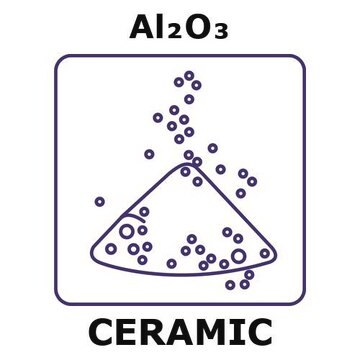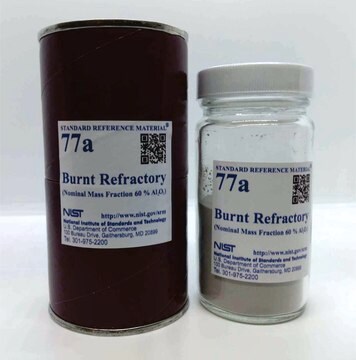642991
Aluminum oxide
nanoparticles, 30-60 nm particle size (TEM), 20 wt. % in H2O
About This Item
Productos recomendados
Formulario
dispersion
liquid (suspension)
nanoparticles
Nivel de calidad
concentración
20 wt. % in H2O
tamaño de partícula
30-60 nm (TEM)
densidad
1.06 g/mL at 25 °C
cadena SMILES
O=[Al]O[Al]=O
InChI
1S/2Al.3O
Clave InChI
TWNQGVIAIRXVLR-UHFFFAOYSA-N
¿Está buscando productos similares? Visita Guía de comparación de productos
Categorías relacionadas
Descripción general
Aplicación
Otras notas
Código de clase de almacenamiento
12 - Non Combustible Liquids
Clase de riesgo para el agua (WGK)
nwg
Punto de inflamabilidad (°F)
Not applicable
Punto de inflamabilidad (°C)
Not applicable
Equipo de protección personal
Eyeshields, Gloves, multi-purpose combination respirator cartridge (US)
Elija entre una de las versiones más recientes:
¿Ya tiene este producto?
Encuentre la documentación para los productos que ha comprado recientemente en la Biblioteca de documentos.
Los clientes también vieron
Artículos
Self-Assembled Nanodielectrics (SANDs) for Unconventional Electronics
Hydrogen is one of the most important resources in providing food, fuel, and chemical products for our everyday life. Sustainable catalytic hydrogen production from bioethanol has gained significant attention in recent years due to globally diminishing fossil fuel supplies, which have necessitated the search for new chemical feedstocks.
A key challenge for nanomaterial safety assessment is the ability to handle the large number of newly engineered nanomaterials (ENMs), including developing cost-effective methods that can be used for hazard screening.
Electronically, it behaves as a wide band gap (3.2 eV) semiconductor and exhibits memristor properties.2 Optically, TiO2 has high opacity with a very high refractive index3 (>2.4), and it exhibits strong absorbance in the UV range.
Global Trade Item Number
| Número de referencia del producto (SKU) | GTIN |
|---|---|
| 642991-100ML | 4061838254122 |
Nuestro equipo de científicos tiene experiencia en todas las áreas de investigación: Ciencias de la vida, Ciencia de los materiales, Síntesis química, Cromatografía, Analítica y muchas otras.
Póngase en contacto con el Servicio técnico



